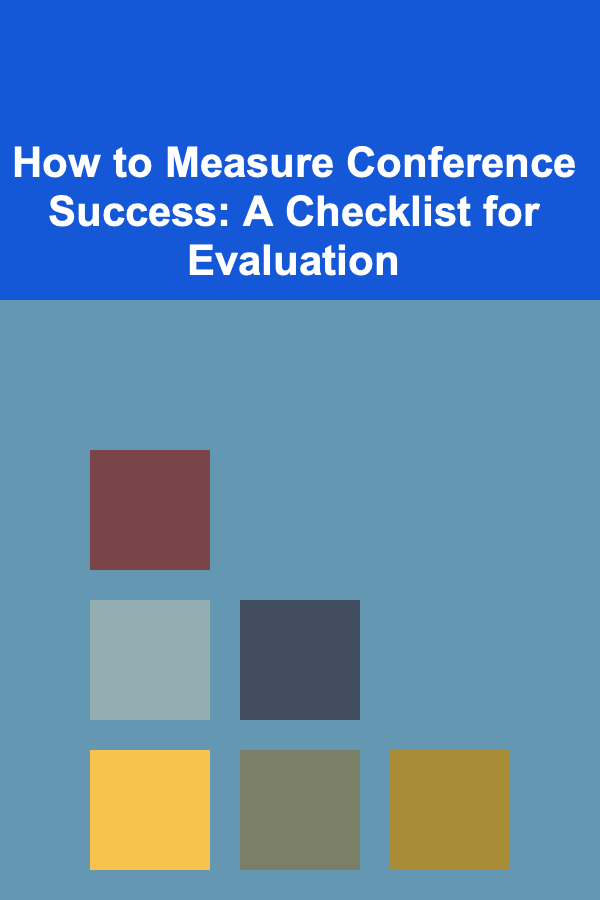
How to Build a Checklist for Writing a Resume for Executive or Leadership Positions
ebook include PDF & Audio bundle (Micro Guide)
$12.99$6.99
Limited Time Offer! Order within the next:

Crafting a resume for an executive or leadership position is a significant task. These roles demand a combination of high-level skills, a proven track record of leadership, and a strategic approach to management. Therefore, the stakes are higher when it comes to how you present yourself to potential employers. Your resume needs to not only showcase your experience but also reflect your ability to lead teams, drive business growth, and make pivotal decisions.
In this actionable guide, we will walk you through the essential components of a resume checklist specifically for executive or leadership roles. This checklist will help ensure that your resume highlights your qualifications in a way that appeals to hiring executives and decision-makers, providing you with the best opportunity for success.
Begin with a Strong Executive Summary
Your resume's opening section, often referred to as the "executive summary" or "profile," should provide a high-level overview of your professional identity, leadership philosophy, and key achievements. This is your opportunity to set the tone and give the reader an immediate sense of your executive potential.
Checklist for an Executive Summary:
- Position the Summary to Highlight Leadership: Focus on your leadership journey---this should not be just about your skills but how you've used those skills to drive results. Briefly describe your leadership style and approach to decision-making.
- Quantify Achievements: Include quantifiable accomplishments to illustrate the impact you've had in past positions (e.g., "Led a team of 100+ employees to increase revenue by 40% within two years").
- Tailor to the Role: Customize your executive summary for the specific leadership position you are targeting. Align your summary with the goals and challenges mentioned in the job posting.
- Be Succinct: Limit the summary to 3-5 sentences---executives are busy, and they want to see a concise yet impactful overview.
Focus on Leadership Experience
For executive positions, your leadership experience should be front and center. Employers in these roles are looking for evidence that you've led teams, managed complex projects, and contributed to the strategic direction of a company. This section needs to convey not just the titles you've held but the depth of your responsibility and the results you achieved.
Checklist for Leadership Experience:
- Highlight Key Leadership Roles: List your most relevant leadership roles first, starting with the most recent position. Include the name of the organization, your title, and dates of employment.
- Quantify Your Impact: Focus on measurable results and outcomes that show your leadership success. Include figures such as revenue growth, cost savings, team performance improvements, market share increases, or successful product launches.
- Demonstrate Strategic Thinking: Employers want leaders who think strategically. Show how you have shaped the long-term direction of the organization through vision, innovation, or foresight.
- Emphasize Change Management: Highlight any major changes you've led, such as restructuring, mergers, or technology transformations, and demonstrate how you managed those transitions successfully.
- Leadership Metrics: Provide evidence of your leadership abilities with metrics. For example, "Improved employee retention by 25% through implementing new leadership development programs."
Showcase Skills and Core Competencies
The skills section of an executive resume should reflect a combination of hard and soft skills. Hard skills are the technical proficiencies necessary for the role, while soft skills relate to how you manage people, communicate, and make decisions.
Checklist for Skills and Core Competencies:
- Include Executive-Specific Skills: These can include skills such as strategic planning, financial oversight, team leadership, change management, and cross-functional collaboration.
- Highlight Communication and Negotiation Skills: Executives need to be effective communicators. Show your ability to negotiate, persuade, and communicate clearly with stakeholders at all levels.
- Problem-Solving and Critical Thinking: Emphasize your ability to approach problems strategically, think critically, and come up with innovative solutions in high-pressure situations.
- Technology Proficiency: Depending on the industry, it may be important to include any relevant technical expertise, such as experience with enterprise resource planning (ERP) systems, customer relationship management (CRM) tools, or data analysis software.
- Leadership Development: Mention any experience in coaching, mentoring, or developing future leaders within the organization.
Include Education and Certifications
In executive roles, your educational background is still important, but it should be positioned to demonstrate how it has equipped you for leadership. The same applies to certifications and training programs, especially those that add specific value to the leadership position you're applying for.
Checklist for Education and Certifications:
- List Relevant Degrees: Include your highest degree first, along with the institution and year of graduation. For example, "Master of Business Administration (MBA), Harvard Business School."
- Include Executive Training and Development: Highlight any executive programs you've attended, such as leadership development courses, board-level training, or MBA executive programs.
- Relevant Certifications: Mention any certifications that enhance your credibility as a leader, such as Project Management Professional (PMP), Six Sigma, or leadership certifications from reputable organizations.
- Ongoing Education: If you are actively pursuing any additional education, such as advanced courses or professional certifications, mention them to show a commitment to continuous learning.
Highlight Strategic Achievements and Impact
For executive positions, employers want to know what impact you can make on the company's overall success. This means your resume must convey the strategic achievements you've accomplished during your career and how they align with the goals of the organization.
Checklist for Strategic Achievements:
- Include Major Projects or Initiatives: List any high-level projects or initiatives you have led. This could include product launches, entering new markets, or implementing cost-saving strategies.
- Align Achievements with Company Goals: Show how your contributions have supported or advanced the broader company mission or vision.
- Demonstrate Return on Investment (ROI): When possible, include financial metrics or ROI to back up your achievements. For instance, "Led a restructuring initiative that resulted in $15M in savings annually."
- Cross-Departmental Collaboration: Highlight instances where you've worked across departments or functions to drive company-wide initiatives.
Incorporate Leadership Philosophy or Values
Your leadership philosophy reflects the values and principles that guide how you lead. This is crucial for executive roles, as employers are not only hiring a set of skills but also a mindset and approach to management.
Checklist for Leadership Philosophy:
- Define Your Leadership Style: Briefly describe how you approach leadership, whether it's transformational, servant leadership, data-driven decision-making, etc.
- Align with Company Culture: Research the company's values and culture and, where appropriate, align your leadership philosophy with theirs. This will demonstrate that you're a good fit for their organization.
- Highlight Your Commitment to Diversity and Inclusion: Many companies seek executives who are committed to fostering inclusive environments. If applicable, mention your dedication to diversity and how you've promoted it within your teams.
Format and Design for Clarity
Executive resumes are meant to impress, but clarity is key. Hiring managers for leadership roles are looking for concise, impactful information without unnecessary complexity.
Checklist for Resume Design and Formatting:
- Use Professional Formatting: Ensure your resume is clean and easy to read. Use professional fonts like Arial or Calibri, and avoid overly creative or flashy designs that may distract from the content.
- Use Bullet Points for Readability: When listing achievements or responsibilities, use bullet points to keep the information digestible.
- Keep it Concise: Limit your resume to 2-3 pages, focusing only on the most relevant information for the executive role.
- Highlight Key Sections: Make sure the sections of your resume---such as your executive summary, leadership experience, and strategic achievements---are clearly demarcated, so hiring managers can quickly scan the document.
Proofread and Get Feedback
Before submitting your resume, proofread it carefully to ensure there are no errors. A single mistake can tarnish your professional image.
Checklist for Proofreading:
- Check for Spelling and Grammar Errors: Even minor errors can make you appear careless. Use a tool like Grammarly, or enlist a colleague to review the document.
- Ensure Consistent Language: Maintain consistent terminology, especially in your job titles, achievements, and dates.
- Seek Feedback: Ask a trusted colleague, mentor, or executive recruiter to review your resume. They can provide valuable insights and help refine your document further.
Conclusion
Writing a resume for an executive or leadership position requires a strategic approach. It's not just about listing your career history, but about framing your experiences and achievements in a way that demonstrates your capacity to lead at the highest level. By following the checklist outlined in this guide, you can create a compelling, results-driven resume that effectively showcases your qualifications and positions you as the ideal candidate for an executive role.

Affordable and Enjoyable Budget-Friendly Home Entertainment Ideas on a Tight Budget
Read More
How to Create an Efficient Home Office in Small Rooms
Read More
How to Measure Conference Success: A Checklist for Evaluation
Read More
How to Organize a Game Night Party That Everyone Will Enjoy
Read More
How to Store Off-Season Clothing in Small Spaces
Read More
Monetizing Deep Learning: Creating AI Tools for Ongoing Revenue
Read MoreOther Products

Affordable and Enjoyable Budget-Friendly Home Entertainment Ideas on a Tight Budget
Read More
How to Create an Efficient Home Office in Small Rooms
Read More
How to Measure Conference Success: A Checklist for Evaluation
Read More
How to Organize a Game Night Party That Everyone Will Enjoy
Read More
How to Store Off-Season Clothing in Small Spaces
Read More